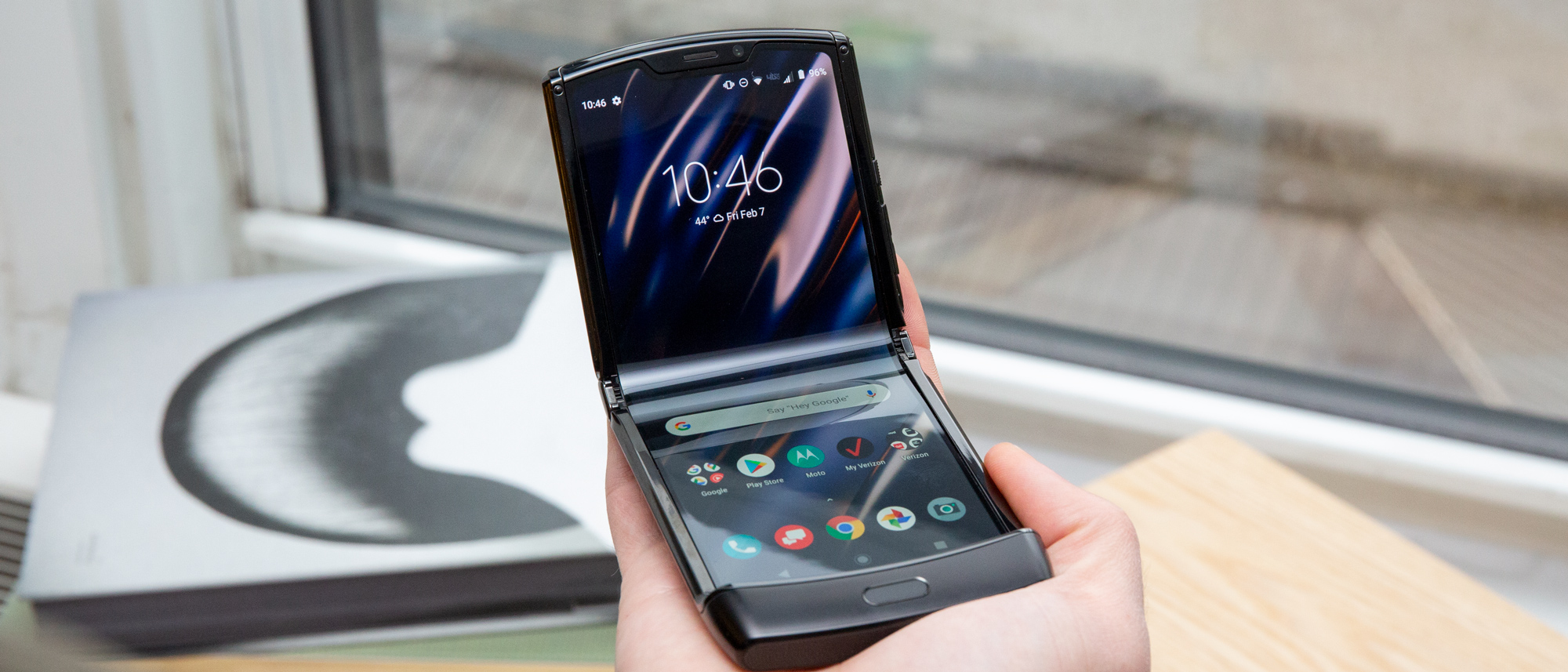Tom's Guide Verdict
The Motorola Razr offers a large display in a futuristic foldable design, but its questionable durability, short battery life and lackluster camera make it a tough sell at $1,500.
Pros
- +
Futuristic folding screen
- +
Super compact when shut
- +
Free screen replacement for a year
Cons
- -
Very expensive
- -
Questionable build quality
- -
Short battery life
- -
Disappointing camera
- -
Verizon bloatware
Why you can trust Tom's Guide
The Motorola Razr is not the phone that will make foldable phones catch on.
Motorola’s phones were the epitome of cool during the mid-aughts, and the company has found an admittedly cheeky way to honor that design in its first-ever foldable. You get a 6.2 inch display when you want it and a compact clamshell when you're on the move.
However, between the Razr’s questionable build quality, underwhelming performance, middling camera and awful battery life, the folding trick — neat as it may be — isn’t enough to save this device or make it worthy of our best phones list.
Our Motorola Razr review will tell you everything you need to know about this bold but misguided foldable.
Motorola Razr review: Cheat sheet
- The Razr unfolds to reveal a 6.2-inch display, which feels futuristic but the plastic display can show small lumps or dents.
- There are serious questions around this phone's durability, as one Razr's display started peeling after one week.
- The Quick View display up front comes in handy for quick actions, such as glancing at notifications, taking selfies and using Google Assistant.
- The. Snapdragon 710 processor provides decent performance, but this is nowhere near as fast as leading flagship phones.
- Don't expect much from the 16MP camera, which took disappointing shots compared to the iPhone 11 Pro and Pixel 4.
- Lasting just 6 hours, the Razr's battery life is about half that of the longest-lasting phones.
Motorola Razr review: Specs
| Row 0 - Cell 0 | Row 0 - Cell 1 |
| Interior display | 6.2-inch OLED (2142x876) |
| Exterior display | 2.7-inch OLED (800x600) |
| CPU | Qualcomm Snapdragon 710 |
| RAM | 6GB |
| Storage | 128GB |
| Rear cameras | 16MP (ƒ/1.7) |
| Front camera | 5MP (ƒ/2.0) |
| Battery | 2,510 mAh |
| Size (folded) | 3.7 x 2.83 x 0.55 inches |
| Size (open) | 6.77 x 2.83 x 0.27 inches |
| Weight | 7.2 ounces |
Motorola Razr review: Release date and price
The Razr costs $1,500 and is available now through Verizon, Walmart and Motorola's online store. At Verizon, you can pay off the phone in monthly installments, which breaks out to $62.49 per month over 24 months.
Verizon is also offering a deal on the Razr that could save you a substantial amount of money if you're switching to Big Red from another carrier. Trade in an eligible phone, and you can get up to $500 in bill credits on the Razr (again, spread out over 24 months); you'll get another $200 in the form of a prepaid Mastercard for switching to Verizon. Current Verizon customers can get up to $300 in bill credits for their trade-in toward a new Razr.
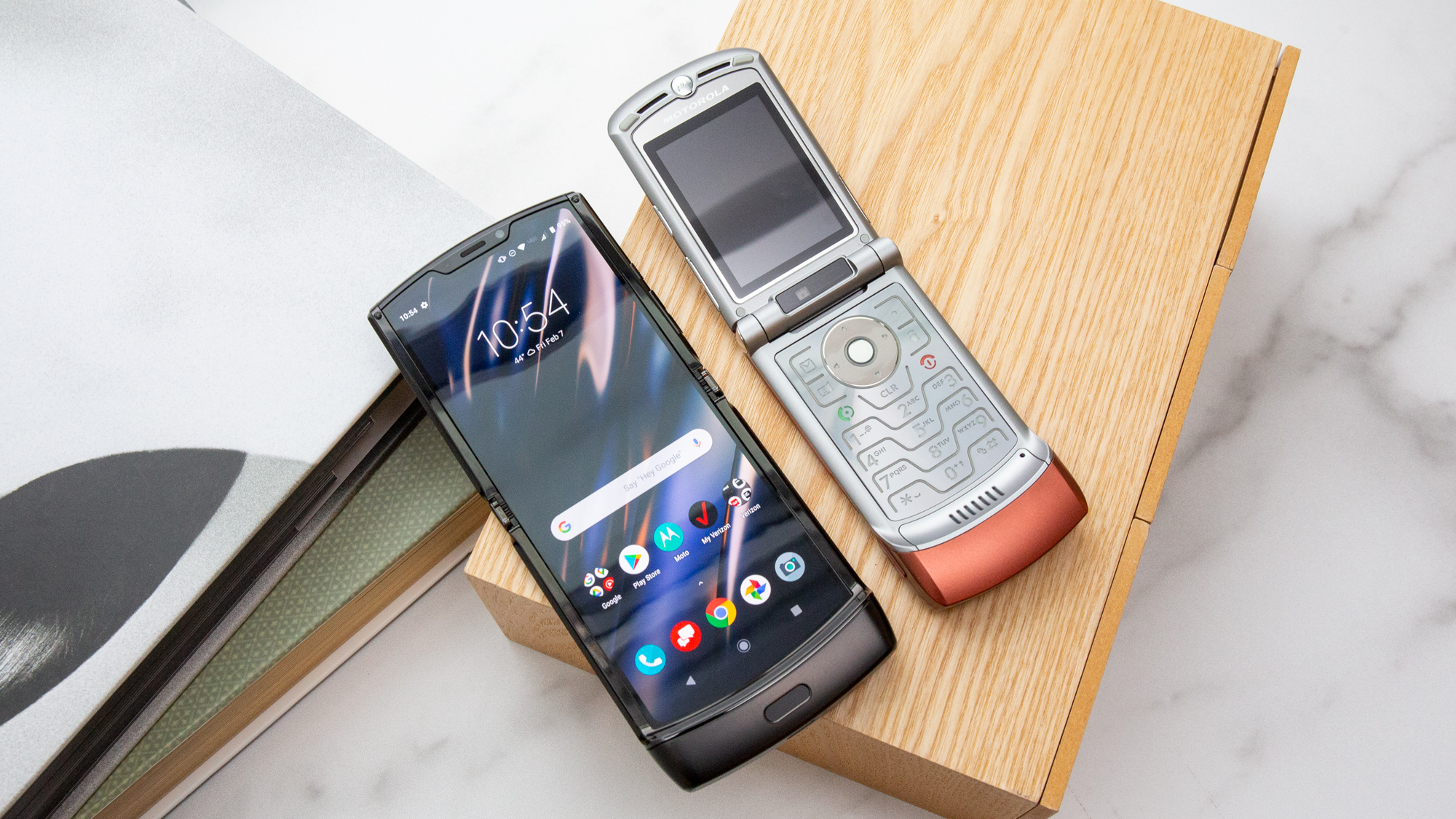
Motorola Razr review: Design and durability
Like the original Razr, the new model is a flip phone that folds vertically. Unlike the original Razr, however, the entirety of the inside of this device is dominated by a flexible plastic display.
Get instant access to breaking news, the hottest reviews, great deals and helpful tips.
The footprint vaguely resembles the Razr of old, with its rounded edges and thick chin on the bottom; it’s only when you place the new model side-by-side with its predecessor that you realize how much squatter and thicker the reimagined Razr is.
But there are similarities if you know where to look. The latest Razr has a touch-sensitive Quick View OLED display on the exterior, right above the lone camera lens, that evokes the secondary screen on the original. The bulk of the matte black exterior is made from polycarbonate just like it was in the old days, and it doesn’t feel good — it’s tacky to the touch, and the textured back is a magnet for fingerprints in the worst way.
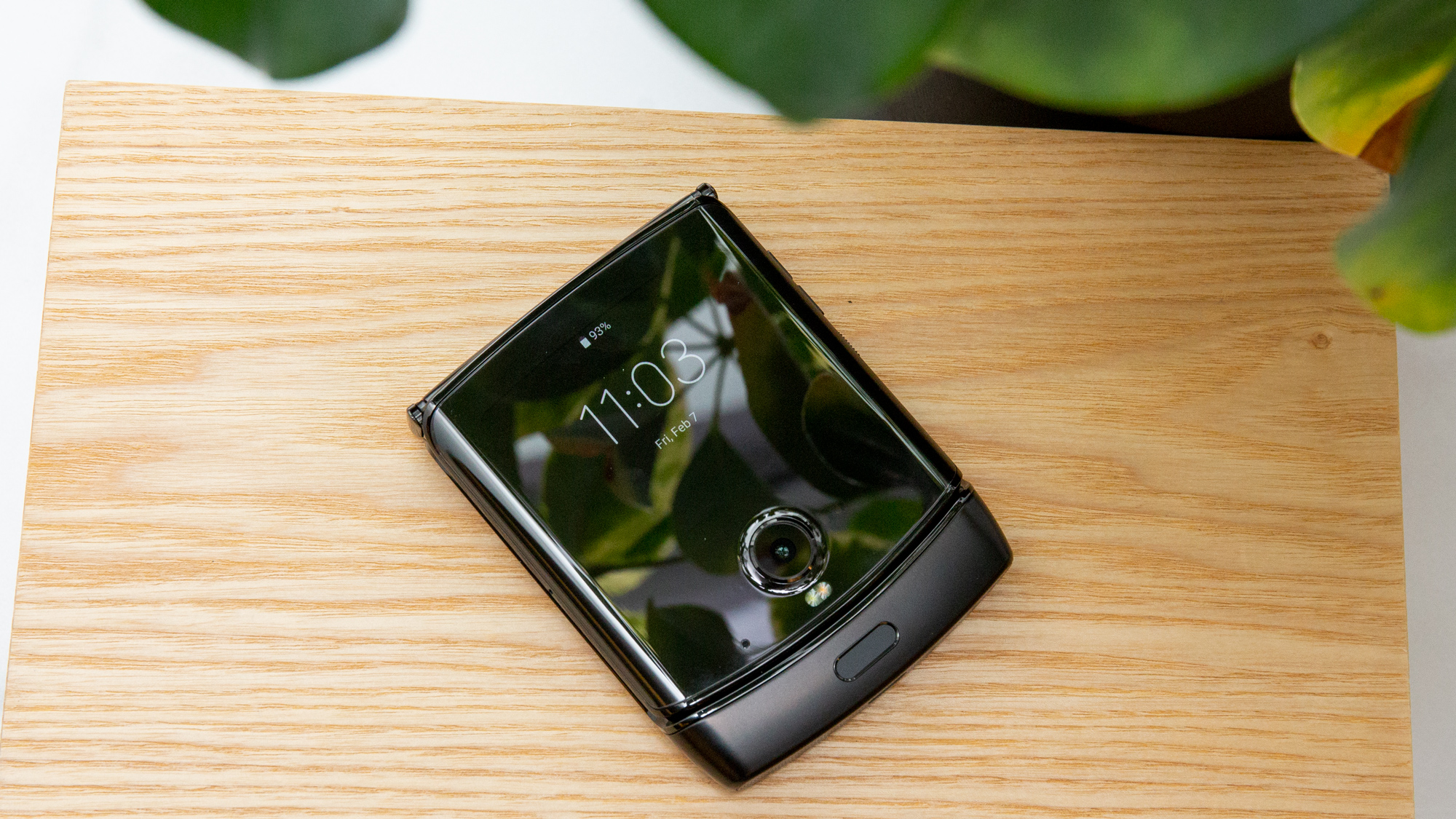
And you’ll be touching this portion of the Razr quite a lot, both because the chin helps balance the device in your hand and because it houses the phone’s capacitive fingerprint sensor and a bottom-firing speaker that’s quite tinny, but gets louder than you’d expect.
When the Razr is unfolded, it’s 6.77 inches tall; when folded, it packs down to a height of 3.7 inches, which makes it far more pocketable than just about any smartphone, save for the oft-maligned Palm. Those with tight pockets or small hands are going to love this about the Razr; it harks back to a time when technology was celebrated for being compact, efficient and accommodating to your life — not the other way around.
Well, at least until you try to open it. Motorola is very proud of the Razr’s hinge — the company says it took four years to develop, and went through 26 revisions before they settled on the final design. The problem is, it’s quite stiff; so stiff, in fact, that it’s not the easiest to flip with one thumb alone. You can do it, but during my time with the device I often worried about scratching the screen with my fingernail, or using so much force that it would cause the phone to slip out of my grasp. And while the old Razr could be described as a tank, you definitely wouldn’t want to risk dropping the new one.
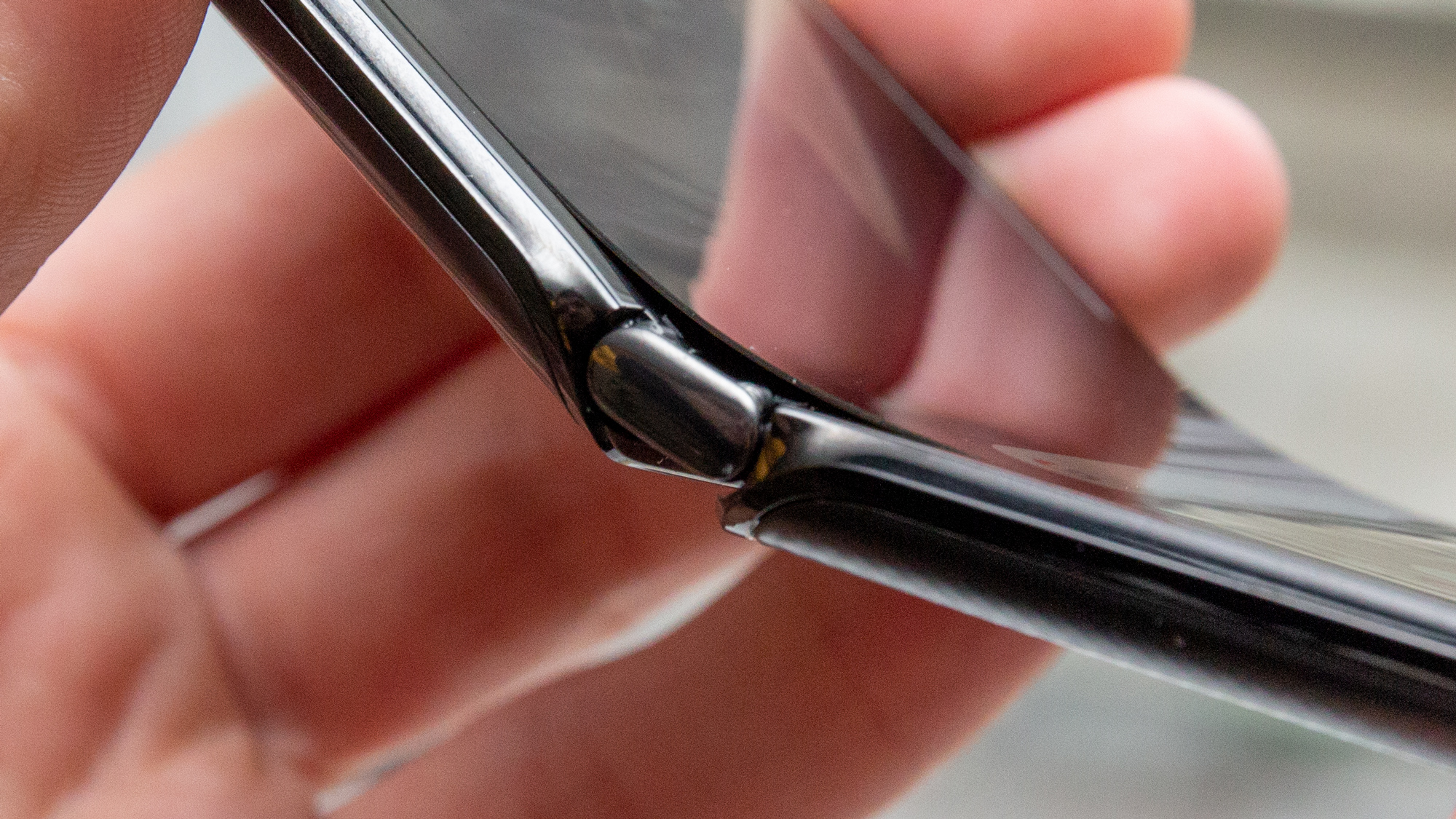
There’s another issue with the hinge that presents itself when shutting the device: a noticeable gap that reveals itself mid-close, where the flexible display actually lifts up from the chassis. The opening is so large, you could easily look through it and see out the other side, which doesn’t instill much confidence. Luckily, whatever debris that might have slipped into that aperture as I used it didn’t cause any noticeable problems, though I’d be curious to see if that remains the case over the long term.
And, yes, we must talk about the sound. There's a faint creaking that rears its head when you open or shut the phone. On one hand, the concern seems a bit overblown; the sound isn’t that loud (you’d probably only notice it in silence), and Motorola says that the noise is “intrinsic to the mechanical movement of the phone” and “in no way affects the quality of the product.”

We can't confirm with certainty that the Razr will withstand the rigors of everyday life.
This is no simple hinge; it’s a complex array of many moving parts, including sliding support plates that physically move the display downward when closing the phone. Keeping that in mind, I can live with a seemingly inconsequential sound as a tradeoff for this mini miracle.
That said, I also understand the criticism. When you spend $1,500 on a piece of technology, you don’t want to believe you’re slowly destroying your investment simply by using it every day. It’s disconcerting to hear, and again, we don’t know how it’ll change with time. For what it’s worth, the Razr’s standard one-year warranty will cover screen replacements, and if a new screen is needed outside of the warranty, it will cost $299, or 20% of the cost of the phone itself.
Still, we must add that Motorola has given us only a week with our loaner before requiring us to ship it back, which is a shorter time than most review terms. That doesn’t allow us to confirm with certainty that the Razr will withstand the rigors of everyday life.
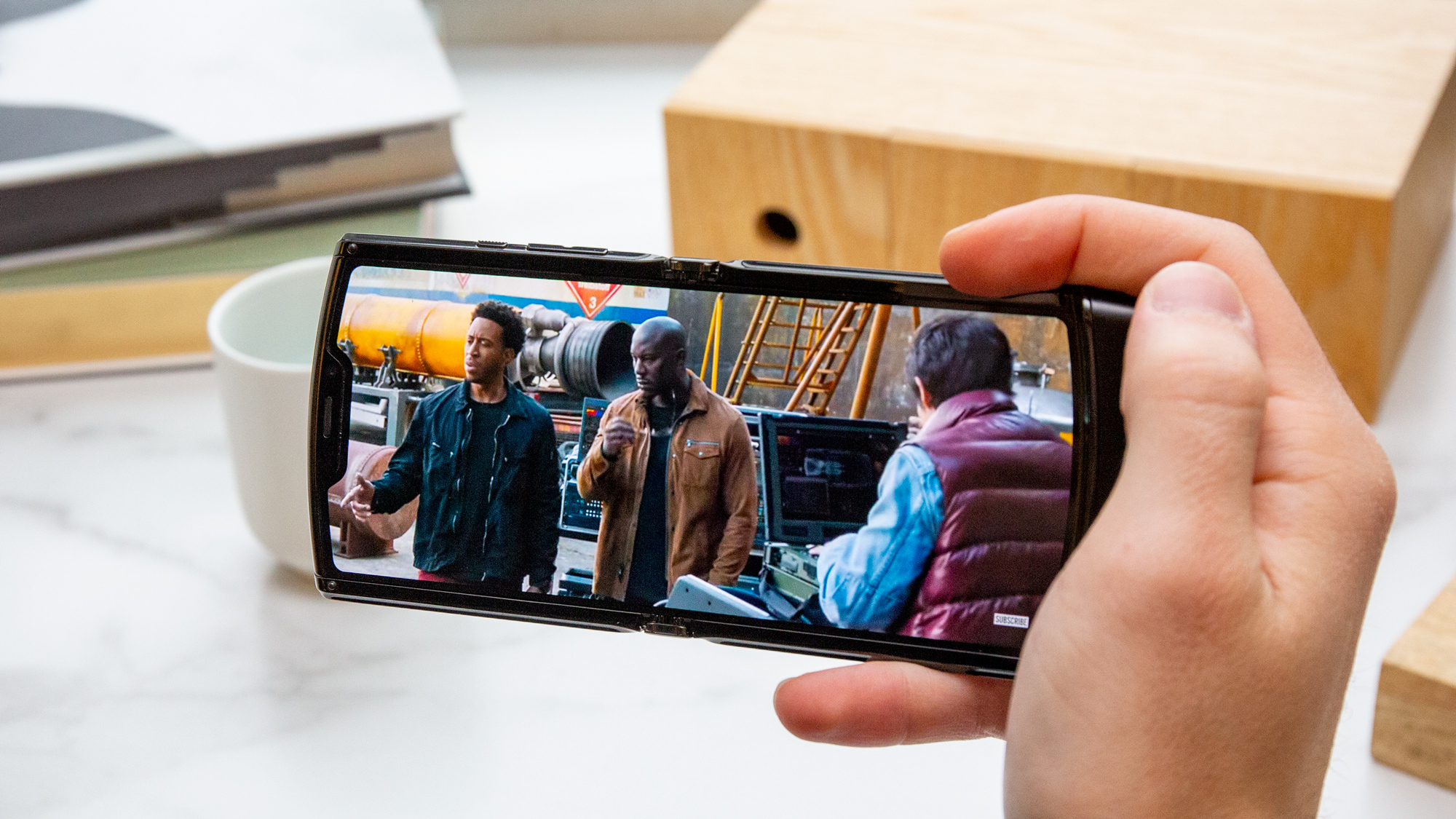
Motorola Razr review: Displays
The Razr has two displays: a 6.2-inch, 21:9 plastic OLED panel on the inside with HD resolution (you read that right; no full-HD for this pricey foldable) as well as the aforementioned 2.7-inch, 4:3 OLED panel on the outside, which serves up notifications, quick toggles, and serves as a viewfinder when snapping a selfie while the device is closed.
Having a 6.2-inch display on a device that you could easily forget is in your pocket is a pretty great perk, but the screen itself exhibits some of those classic foldable characteristics. The plastic screen is not anywhere near as smooth and consistent as glass; there are horizontal creases cutting across the regions that bend, which you sometimes notice when the display is outstretched. Whatever film is protecting the panel lends an orange peel-esque iridescence under bright indoor light.
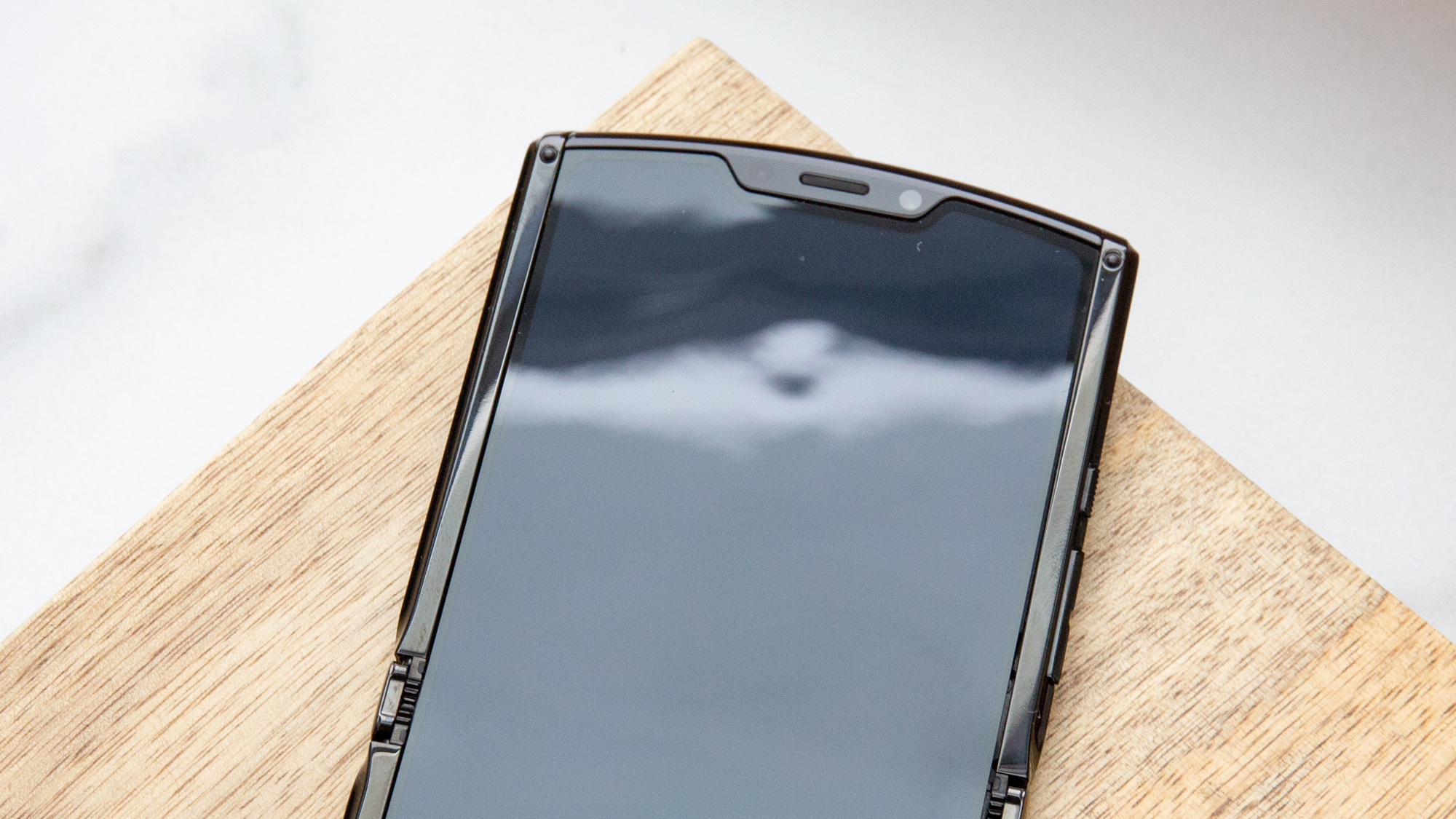
Motorola says “bumps and lumps are normal,” and you’ll certainly feel them when scrolling. Our unit has a circular depression right in the center of the top half, and whenever I ran my index finger over that divot, it was never a great feeling.
The screen also doesn’t lie totally flat when unfolded. It gets close, but there’s always the slightest hint of an angle, which is hard to ignore when you’re holding the Razr vertically and reading a webpage, though a bit easier to forget about when cradling the device with two hands to play a game.
As far as colors and display quality is concerned, the Razr’s main screen is serviceable across the board, with surprisingly decent viewability from off-center angles and robust color, especially when set to the default Saturated profile. Under our light meter, the Razr’s screen notched an sRGB coverage score of 203.2%, indicating very pronounced hues compared to the Pixel 4 (130.1%) and the iPhone 11 Pro (118.6%). If that color is a bit too loud for your liking, you can always select a more muted palette in the settings.

The screen is far from perfect, however. At a peak brightness of just 386 nits, the Razr’s screen is far too dim compared to leading flagships from Apple and Samsung, which routinely achieve nearly twice that these days.
What’s more, the resolution hit is unfortunate. Watching a trailer for the upcoming Fast & Furious movie was immersive enough thanks to that 21:9 aspect ratio, but the HD resolution made the mess of explosions and death-defying stunt driving feats all just one big blur. YouTube, like many media apps, gives you the option of pinching to expand content so that it fills your device’s panel, but this simply compounds the problem and further softens visuals. I instinctively kept trying to raise the trailer’s resolution to 1080p, but 720p is the best the Razr can manage.
This screen is much better suited for surfing the web and scrolling through social media apps, where you can really take advantage of those extra-tall proportions. You can see so much more content at any given time, and the height of the panel also lends valuable extra space while messaging or emailing, as you’re typing on the keyboard.

Motorola Razr review: Cameras
You’ll find but two cameras on the new Razr — a single-lens exterior shooter tied to a 16-megapixel sensor, and a 5-MP front-facing camera concealed in a notch inside that also houses the earpiece.
The Razr’s unique form factor means that the 16-MP main shooter can either be used as a conventional rear camera when the device is unfolded and in use, or as a selfie cam when the phone is shut. Just twist the device twice — a common shortcut that’s appeared on a number of Motorola handsets over the years — and you’ll call up the camera, which instantly fills the Quick View display with a little viewfinder, so you can quickly immerse yourself in your surroundings and return to your business. Alternatively, you can open the phone at that point and the main display will preemptively open the camera app, saving you a step.
Those are nice conveniences but unfortunately they don’t save the fact that the Razr’s cameras are not great. This shot of New York’s Bryant Park captured on a cold and rainy day highlights the deficiencies with the main shooters in Motorola’s first foldable, especially compared to the same scene as viewed through the lens of the Pixel 4. Google’s handset is clearly so much more adept at handling intense sources of light, be it the overcast sky above or the street lamps below. It’s also hard to overlook the red tint pervading everything on the Razr’s rendition.
The story gets worse for the Razr indoors, as this coffee shop photo op depicts. In fairness, there’s a degree of smokiness in the center of the frame of the shot taken by the iPhone 11 Pro; at the same time, however, the iPhone is at least able to render the view outside, the entrance to the coffee shop, the light from the chandelier above and the carving pattern in the ceiling — all of which the Razr fails to.
But nighttime is where the Razr falls the shortest. Motorola’s Night Vision mode simply doesn’t produce the clearest, crispest and most evenly-illuminated low-light shots under any circumstances — something highlighted by the iPhone 11 Pro’s attempt at this same evening Brooklyn scene. Even if we excuse the car entering from the right of the frame, the Razr’s shot is clearly impacted by camera shake, even though I was careful to take multiple shots and ensure both phones remained as still as possible. The brick texture of the buildings across the street is totally muddied by Motorola’s foldable, and the trees above are unevenly lit.
The ability to use the main lens for selfies should mean you’ll get better results than you would on most phones, which use inferior sensors and optics from front-facing cameras. Instead, I’ve come away somewhat unimpressed with the Razr’s 16-MP primary camera and totally disappointed by that 5-MP front-facing lens when snapping a pair of portraits. I suspect Motorola felt it needed to supply the Razr with some kind of selfie shooter, no matter how low resolution, just so the device would have a way of conducting video calls. However, you’ll clearly never want to use that sensor for any other reason — the photos you end up with are simply too blurry and too washed out.

Motorola Razr review: Performance
While $1,500 may seem steep for a phone, in the new and fast moving world of foldables, it’s actually somewhat cheap, considering that the Galaxy Fold debuted last year at $1,980. And one of the most obvious ways in which Motorola has been able to keep costs down is with the Razr’s specs.
Most smartphones that cost as much as the Razr come with flagship Qualcomm chipsets. For this year, that certainly figures to be the Snapdragon 865, which also supports 5G networks though it’s yet to arrive in any phones as of this writing. But the Razr doesn’t have a Snapdragon 865 — instead, it makes do with a Snapdragon 710 CPU, a step down from Qualcomm’s 8 series chipsets. You also get 6GB of RAM on the Razr,when most Android phone makers are stuffing at least 8GB into their premium models. The Razr’s battery is quite small too, tipping the scales at just 2,510mAh.
It’s for those reasons that we didn’t expect the Razr to dazzle us with its performance entering this review. And while the benchmarks more or less confirmed those suspicions, in actual use and gaming, the Razr is actually more up to the task than you’d think.
Motorola is asking customers to pay $1,500 for a phone that doesn’t perform like a $1,500 phone should.
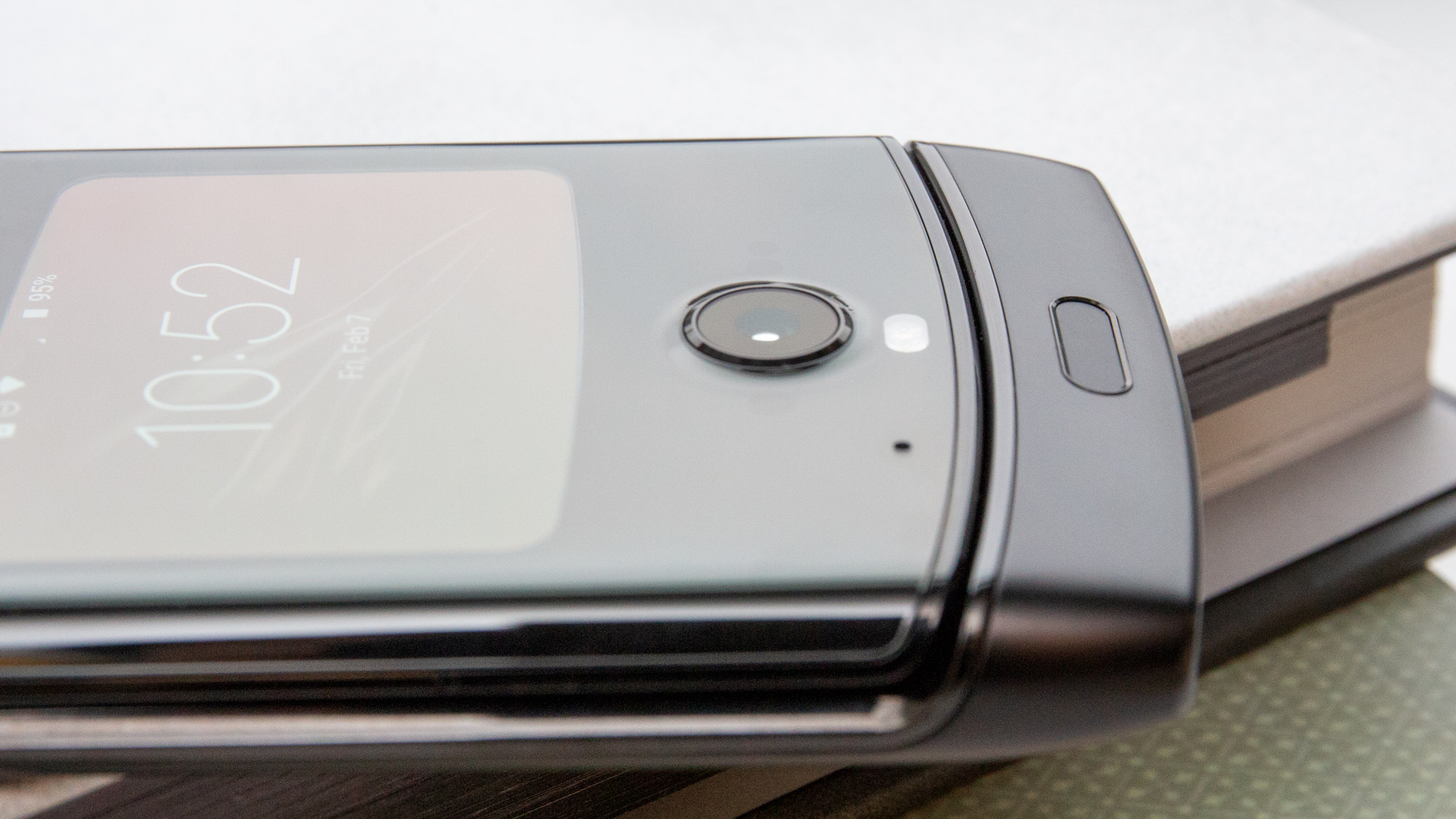
I loaded up Asphalt 9: Legends — one of the most demanding titles on the Google Play Store — and ratcheted up the graphics to the highest setting. The experience wasn’t perfect, with some brief framerate hiccups here and there, and more jaggies than you’re likely to see if you ran the game on a Snapdragon 855-powered handset. That said, the game was still very playable, and I was able to finish atop the podium in a few races.
So while the numbers paint a depressing picture for the Razr — especially compared to any other phone you might spend upward of $1,000 on — they’re not necessarily a death sentence. In Geekbench 5, which evaluates overall system performance, the Razr delivered a multi-core score of 1,406; 3DMark’s Sling Shot Extreme graphics gauntlet produced a score of 1,857. Not surprisingly, that’s a long ways from other premium offerings: The OnePlus 7T, which costs just $599 — less than half the price of the Razr — achieved 2,759 in Geekbench, while the $1,099 Galaxy Note 10 Plus (5,781) and $999 iPhone 11 Pro (6,163) shamed it in 3DMark’s test.
So no — the Razr will not give you the power you’re paying for. Granted, I understand why Motorola chose the 710 chip for this phone. It had to save costs somewhere, and scaling back the processor may have actually been the best decision, given that most people probably don’t need all the grunt that a Snapdragon 855 or A13 Bionic chip provides.
However, from the standpoint of a consumer, that’s not really your problem. At the end of the day, Razr buyers will pay $1,500 for a phone that doesn’t perform like a $1,500 phone should, and that is concerning.
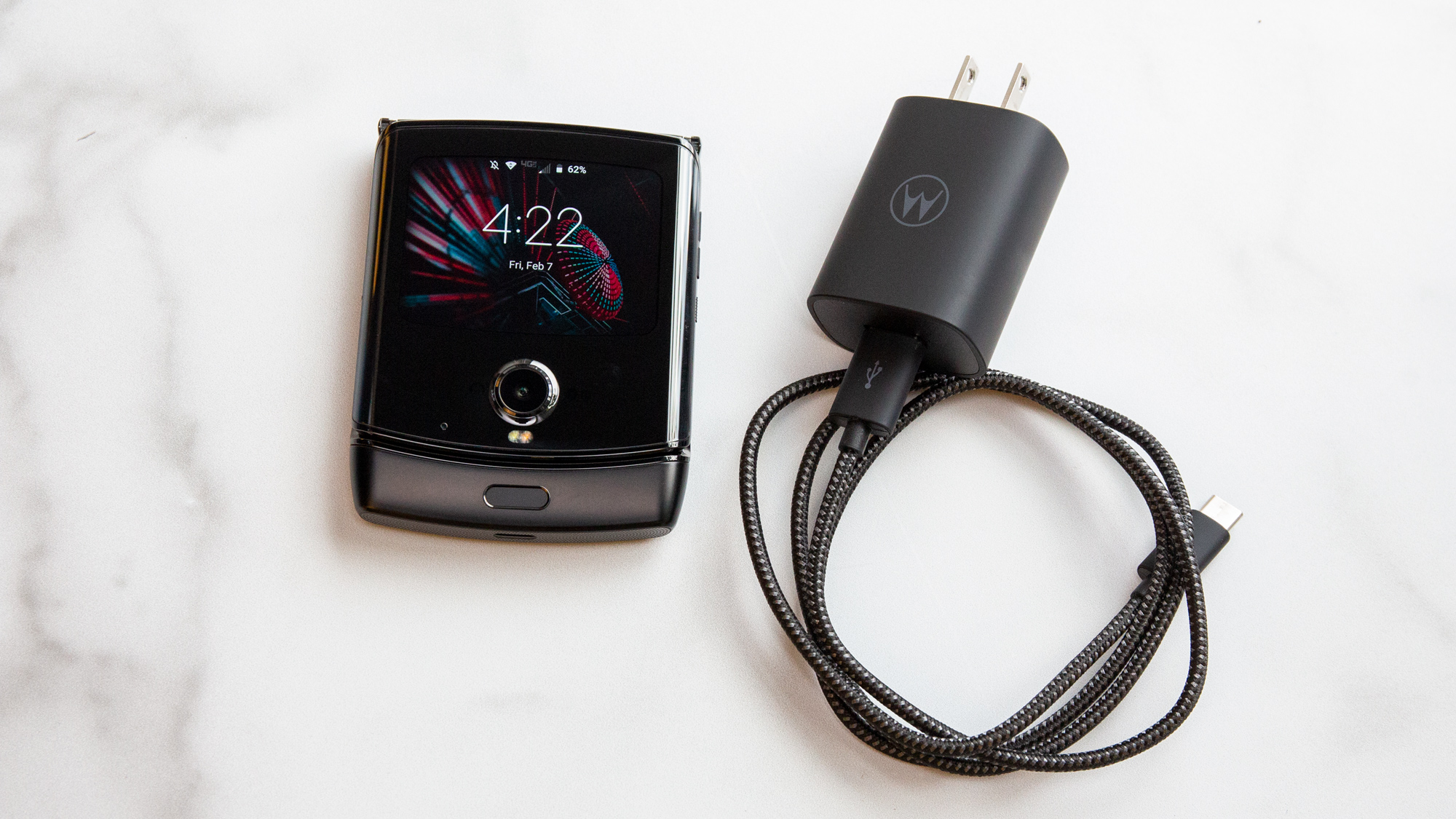
Motorola Razr review: Battery life
One look at the Razr, and you’ll find there aren’t many places for Motorola to have stored the battery in this phone. When unfolded, the handset is less than three-tenths of an inch thick (excluding the chin, of course) which means this little folding marvel is incapable of storing all that much juice.
And so the Razr makes do with just a 2,510mAh battery, which happens to be quite small given the size of its display. The 6.4-inch Galaxy S10 Plus has a 4,100mAh power pack; and the 6.5-inch OnePlus 7T’s weighs in at 3,800mAh. Even the diminutive Pixel 4, with its 5.7-inch screen, has a 2,800mAh battery.
The Snapdragon 710 is a chip designed more for efficiency than performance, so you’d think that might work to the Razr’s advantage. Nevertheless, our testing confirmed our worst suspicions. Motorola’s foldable lasted an average of 6 hours and 8 minutes between two sessions of Tom’s Guide’s custom battery test, where devices endlessly load webpages while set to 150 nits of brightness, over 4G LTE until the phone runs completely out of juice.
The phones with the best battery life last 11 to 12 hours on a charge, so the Razr offers about half the endurance of what we would want from a phone at this price.
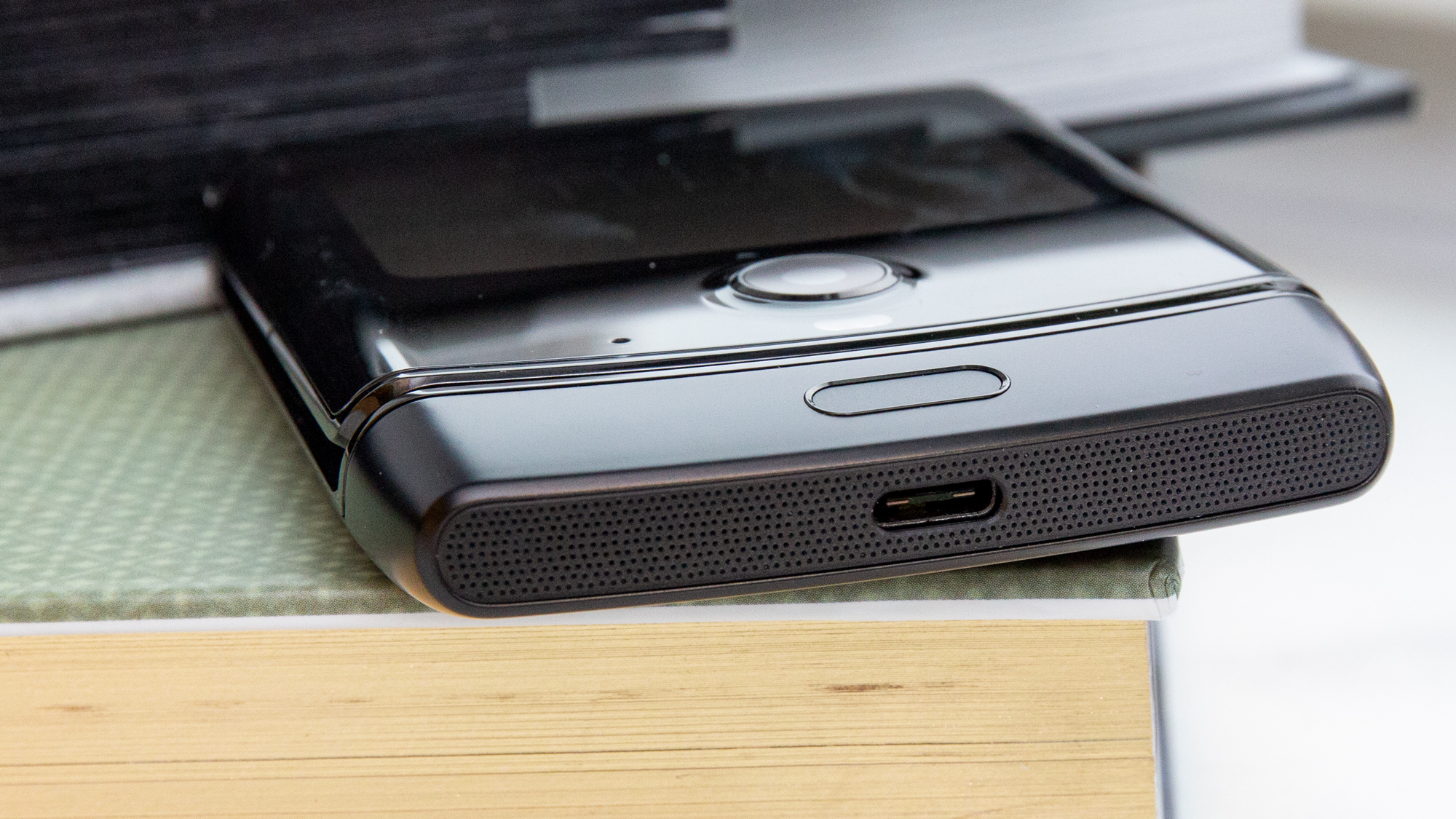
By comparison, the Pixel 4’s battery clocked in at 8:03, which is about 2 hours less than the smartphones average. The Galaxy S10 Plus (12:35) and the iPhone 11 (11:16) also lasted a lot longer. Ironically enough, Motorola’s $249 Moto G7 Power ran for nearly three times longer than the Razr did, totaling 15 hours and 35 minutes, even though you could buy six of them for the price of this foldable.
Thankfully, the Razr charges quickly with its packaged 15-watt TurboPower adapter, but then you’d expect as much because again, this phone has a very small battery. It’ll hit 43% from empty after a half hour, which is pretty good, but less impressive when you consider other phones can receive power at a much faster clip, and hit higher percentages even with significantly larger batteries. Motorola was one of the first phone makers to jump on the Qualcomm QuickCharge bandwagon almost a decade ago; what happened?

Motorola Razr review: Software
Although the latest version of Google’s mobile OS, Android 10, shipped last fall, and even though Motorola’s upcoming G-series handsets already support Android 10 out of the box, the Razr comes with Android 9 Pie.
That’s something you might expect from a budget or midrange mobile device — certainly not a foldable that costs $1,500, and especially when Android 10 specifically boasts improvements for devices with foldable screens. However, there are at least some clever custom software features present in the new Razr, mostly pertaining to task handoffs between the exterior and interior displays.
The Retro Razr mode is an apt metaphor for the Razr as a whole — charming for about 15 minutes, but not particularly useful.
For example, if you tap reply on a text or email displayed on the external screen, a notification will direct you to continue the task on the larger one. If you then open the Razr, a blank message will be waiting for you to compose. This sort of functionality works with only a limited number of apps, though Motorola says it is working with developers to expand its capabilities.
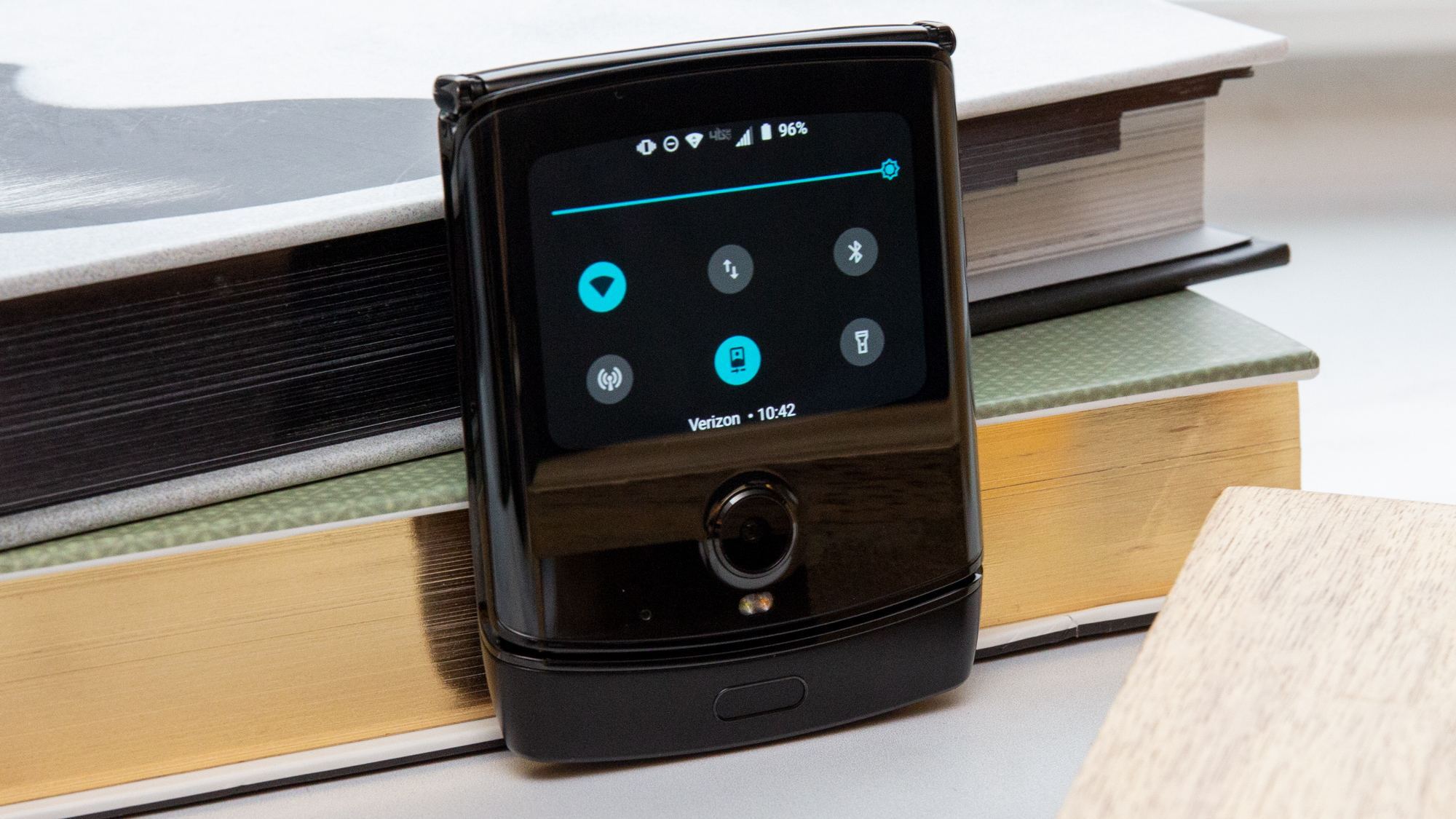
Although the Quick Look display is a great idea in theory, I couldn’t help but feel that during my time with the Razr, it simply wasn’t as seamless and natural to use as it should have been. Authentication is one of the big reasons why. The Razr has that aforementioned fingerprint sensor and a rudimentary 2D facial recognition, which cleverly works through the exterior camera that faces you when the phone is closed.
That’s all well and good, but for some reason, the phone still requires you to swipe up on the Quick Look screen to unlock, even if you’re already pointing it at your face. To make matters worse, the swipe up gesture is remarkably hard to get right on this tiny screen. You’d think a swipe in the proper direction should do the trick, no matter from where you start the action, but often times I’ve had to swipe three or four times before getting it right. And even when I did, sometimes face unlock flat out refused to work until after the phone already presented me with the PIN or password field. Authentication on the Razr is, put simply, one everlasting exercise in frustration.
I do like that you can access quick toggles from that little screen, though I have a tip to offer to anyone who evidently hasn’t been put off by this generally negative review and has still chosen to buy the Razr. If you’ve set the flashlight as one of your preferred toggles, don’t press it while the phone is shut, or you will blind yourself.
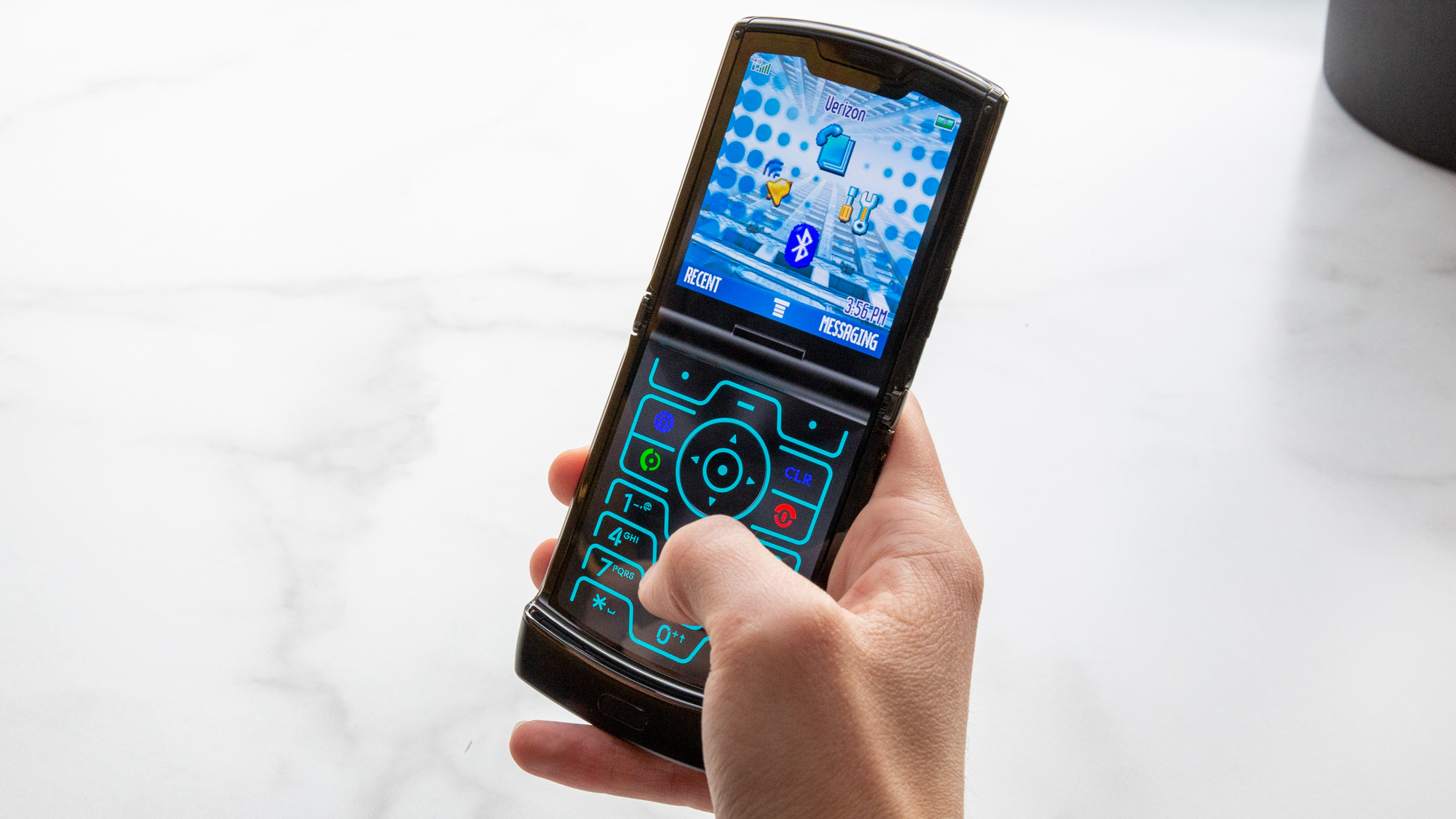
There was one little feature that delighted me as I used the Razr, if only for a moment — and it’s actually tough to find if you don’t know where to look. Called Retro Razr, it's hiding in those toggles, though you actually have to add it to your chosen shortcuts, because it doesn’t appear in the notifications shade by default. When you fire it up, you’ll get a facsimile of the old Razr experience and UI right on your new foldable phone, which is cute. You can even dial people directly from this menu, which is moderately amusing. I imagine this will be a popular party trick for new Razr owners, and then quickly forgotten. This mode is actually an apt metaphor for the Razr as a whole — charming for about 15 minutes, but not particularly useful.
The other issues with the Razr’s software are a consequence of its Verizon exclusivity. There’s a staggering load of bloatware on this thing, from the usual suspects, like Candy Crush Saga and Game of Thrones: Conquest; to Yahoo’s whole suite of apps; to WeatherBug, Verizon’s Message+ client and Disney+. Again, this is the sort of thing that you’d look past on a heavily subsidized device, but it’s much more difficult to ignore when you’ve spent well past four figures on a phone. Thankfully, most of the unwanted software can be uninstalled, save for the Verizon stuff which can only be disabled.

Motorola Razr review: Verdict
Motorola’s rebooted Razr is one of the most interesting phones to come along in quite some time, precisely because it has one foot planted in the past, and another in the future. It’s a bold gamble from a company that once upon a time took risks like this all the time, but hasn’t in the better part of a decade — and, for all this phone’s faults, that’s exciting to see.
But oh, the faults. Between the Razr’s midrange processor, awful battery life, disappointing camera and low-resolution display, Motorola made many difficult, cost-cutting decisions to ensure the Razr could be available at a price that some people could potentially afford — at least more people than the Galaxy Fold.
I’ll commend Motorola for its effort. Nevertheless, speedy performance, solid photography and respectable battery life should be table stakes for any $1,500 phone — even one that can pull off a party trick as special as this one. And while I really appreciate the value of having a 6.2-inch screen that can fold down to an insignificant size, it doesn’t excuse the myriad other drawbacks.
Adam Ismail is a staff writer at Jalopnik and previously worked on Tom's Guide covering smartphones, car tech and gaming. His love for all things mobile began with the original Motorola Droid; since then he’s owned a variety of Android and iOS-powered handsets, refusing to stay loyal to one platform. His work has also appeared on Digital Trends and GTPlanet. When he’s not fiddling with the latest devices, he’s at an indie pop show, recording a podcast or playing Sega Dreamcast.
